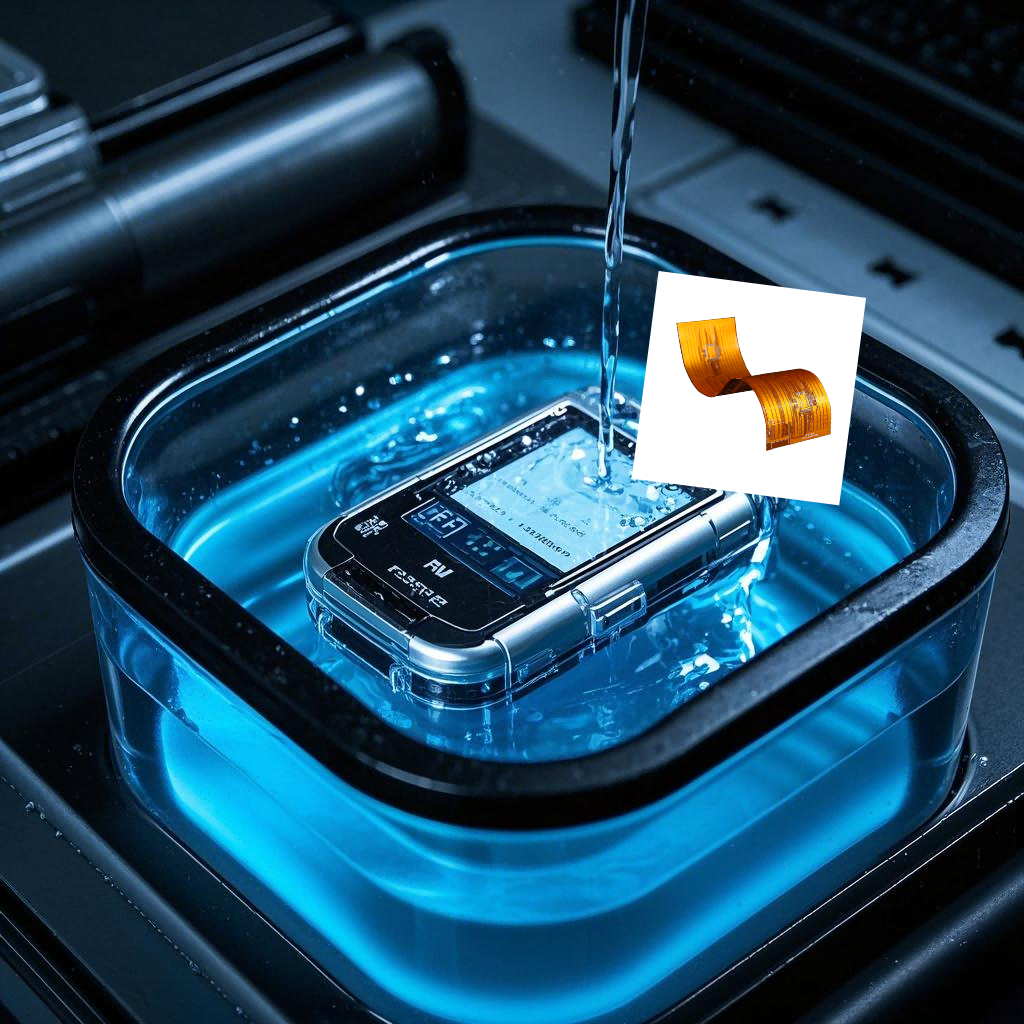Search
Mastering FPC Waterproof Testing: Advanced Methods & Industry Insights
- Feb 07,2025
-
Share
Flexible Printed Circuits (FPCs) are indispensable in modern electronics, enabling innovations in wearables, automotive systems, medical devices, and IoT applications. However, their thin, lightweight design and reliance on polyimide (PI) substrates make them vulnerable to moisture ingress, which can lead to delamination, dendritic growth, or electrochemical migration. Ensuring FPC reliability demands rigorous waterproof testing aligned with industry standards. In this blog, we dive deep into FPC waterproof validation protocols, critical design considerations, and cutting-edge testing methodologies.

Why Waterproof Testing is Non-Negotiable for FPCs
FPCs often operate in harsh environments—think automotive underhood applications, implantable medical devices, or outdoor wearables. Moisture exposure risks include:
Conductive Anodic Filamentation (CAF): Ionic contamination leading to short circuits.
Delamination: Separation of PI base layers or coverlay due to hygroscopic swelling.
Corrosion: Degradation of copper traces or ENIG (Electroless Nickel Immersion Gold) finishes.
Waterproof testing ensures compliance with IP ratings, IEC 60529 standards, and application-specific requirements like automotive AEC-Q200 or MIL-STD-810G.
Industry-Standard Waterproof Testing Methods
1.IP Rating Validation (IEC 60529)
IPX7/IPX8 Testing: Submersion testing at depths up to 3 meters (IPX8) for 24+ hours.
IPX5/IPX6: High-pressure jet sprays (12.5–100 L/min) to simulate rain or washdown conditions.
2.Temperature-Humidity Bias (THB) Testing
Expose FPCs to 85°C/85% RH environments for 500–1,000 hours while applying electrical bias to accelerate failure modes like insulation resistance (IR) drop.
3.Salt Spray Testing (ASTM B117)
Validate corrosion resistance by exposing FPCs to saline fog (5% NaCl) for 48–96 hours.
4.Pressure Pot Testing
Apply 1.5–2.0 atm pressure in a sealed chamber to detect microcracks or weak points in solder mask or coverlay adhesion.
5.Damp Heat Cycling
Cyclic testing between -40°C and 125°C with 95% RH to evaluate material fatigue and interfacial integrity.
Design & Material Considerations for Waterproof FPCs
1.Material Selection
PI Substrates: Opt for high-Tg polyimide films (e.g., UPILEX®) with low moisture absorption (<2%).
Coverlay: Use liquid photoimageable (LPI) solder mask or adhesive-based coverlays (e.g., DuPont™ Pyralux®) for enhanced sealing.
Conformal Coatings: Apply parylene or silicone coatings post-assembly for hydrophobic protection.
2.Layout Best Practices
Avoid sharp bends in moisture-prone areas to prevent microcracks.
Implement castellated holes or edge-plated vias for improved sealing at connector interfaces.
3.Process Controls
Ensure precise laser drilling and etching to minimize microvoids in copper traces.
Use vacuum lamination to eliminate air pockets between PI layers and adhesive systems.
Why Partner with Experts?
Designing waterproof FPCs requires balancing flexibility, durability, and cost—a task best entrusted to seasoned manufacturers.
About Shenzhen Huaruixin Electronics Co., Ltd.
As a leading FPC design and manufacturing specialist, Shenzhen Huaruixin Electronics Co., Ltd. combines 15+ years of expertise with state-of-the-art facilities to deliver robust solutions for demanding environments. Our capabilities include:
Custom FPC Designs: Tailored layouts for high-flex or waterproof applications.
Advanced Testing: In-house IP rating validation, THB chambers, and salt spray testing.
Industry Compliance: Adherence to IPC-6013, ISO 9001, and IATF 16949 standards.
Whether you’re developing next-gen medical wearables or automotive ADAS systems, we partner with clients to optimize FPC performance and reliability.
Conclusion
Waterproof testing is not a checkbox—it’s a science. From material science to precision engineering, every detail impacts FPC longevity in wet environments. By leveraging advanced testing methodologies and partnering with experienced manufacturers like Shenzhen Huaruixin Electronics Co., Ltd., businesses can mitigate risks and deliver products that thrive in real-world conditions.
Join the Conversation
Are you tackling FPC waterproofing challenges? Share your insights or connect with our team at Shenzhen Huaruixin to explore collaborative solutions. Let’s engineer reliability, one circuit at a time!

Let’s talk! We’ll provide the perfect solution for you!
-
 Huaruixin Electronics mainly produces printed circuit boards as the core business, to provide customers with one-stop solutions for FPC/PCB production, components sourcing and Assembly.
Huaruixin Electronics mainly produces printed circuit boards as the core business, to provide customers with one-stop solutions for FPC/PCB production, components sourcing and Assembly. - WHAT WE DO — PCB Design Solutions — Flex PCB Production — Components Sourcing — FPC&PCB Assembly
- PRODUCTS — Single Sided Flexible Circuits — Double Sided Flexible Circuits — Multilayer Flexible Cirucits — Rigid-Flex Circuits — FPC Assembly — PCB Assembly
- CAPABILITY — FPC Capability — Rigid-Flex Capability — PCB Capability — Assembly Capability
- Copyright © 2024 Shenzhen Huaruixin Electronics Co., Ltd. All Rights Reserved.
- Design By BONTOP


